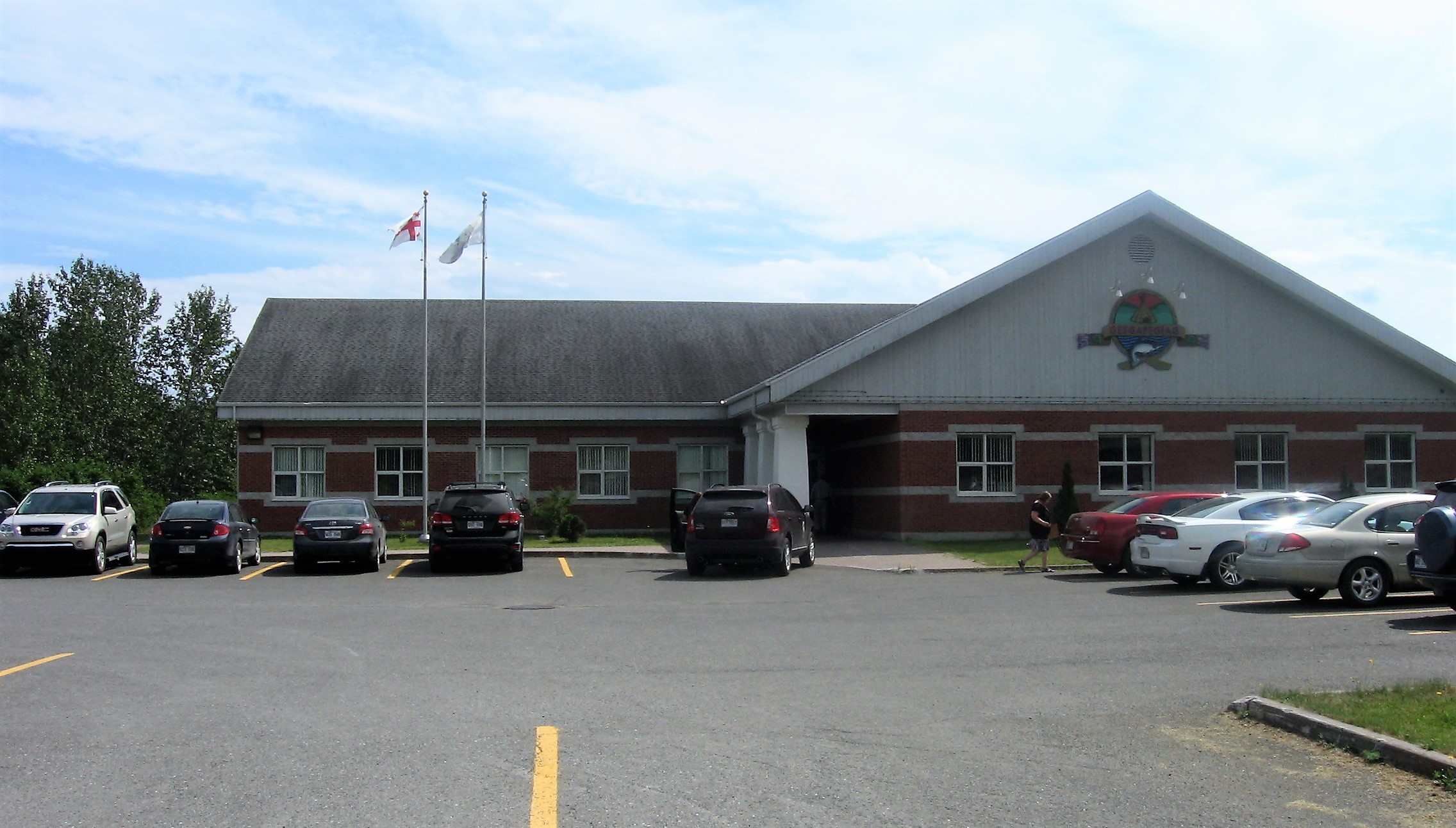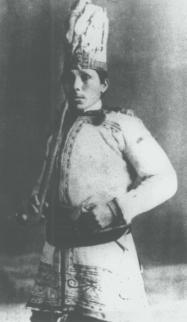|
Assembly Of First Nations Quebec-Labrador
The Assembly of First Nations Quebec-Labrador (, AFNQL) is a political organization representing the First Nations of Quebec and Labrador. It represents these First Nations to the ''Secrétariat aux affaires autochtones du Québec'' and to the ministry of Crown-Indigenous Relations and Northern Affairs of Canada. The AFNQL is composed of representatives from 43 communities in the Abenaki, Algonquin, Atikamekw, Cree, Maliseet, Mi'kmaq, Innu, Huron-Wendat and Naskapi nations, as well as from the Mohawks. The AFNQL does not represent the Inuit or any Inuit community; they are represented by Inuit Tapiriit Kanatami. Leadership The AFNQL is composed of the chiefs of the 43 First Nations communities in Quebec. The Assembly elects one member to serve as chief for a term of three years. The Assembly meets about 4 times a year to give mandates to its Bureau and to the Commissions it has set up. The AFNQL is attached to the Assembly of First Nations (AFN) whose office is located in Otta ... [...More Info...] [...Related Items...] OR: [Wikipedia] [Google] [Baidu] |
Wendake, Quebec
Wendake () is the current name for two urban reserves, Wendake 7 () and Wendake 7A, () of the Huron-Wendat Nation in the Canadian province of Quebec. They are enclaves entirely surrounded by the La Haute-Saint-Charles borough of Quebec City, within the former city of Loretteville. One of the Seven Nations of Canada, the settlement was formerly known as ''Village-des-Hurons'' ("Huron Village"), and also as ''(Jeune)-Lorette'' ("New Lorette"). Since the late 20th century, archeologists have found large 16th-century villages of the Wendat (Huron) in the northern Lake Ontario region, which is where they believe the people coalesced as a distinct group. Later they migrated south and by the early 17th century had settled in their historical territory of Wendake in the Georgian Bay region. The Wyandot Confederation was made up of loosely associated tribes who spoke a mutually intelligible Iroquoian language. History Archeologists have excavated 16th-century settlements north of La ... [...More Info...] [...Related Items...] OR: [Wikipedia] [Google] [Baidu] |
Assembly Of First Nations
The Assembly of First Nations (, AFN) is an assembly of Canadian First Nations ( Indian bands) represented by their chiefs. Established in 1982 and modelled on the United Nations General Assembly, it emerged from the National Indian Brotherhood, which dissolved in the late 1970s. The aims of the organization are to protect and advance the aboriginal and treaty rights and interests of First Nations in Canada, including health, education, culture and language. It represents primarily status Indians. The Métis and non-status Indians have organized in the same period as the Congress of Aboriginal Peoples (CAP). Reflecting changes in where Aboriginal peoples are living, it represents primarily urban Indians, including off-reserve status Indians and Inuit. History Indigenous peoples of North America have created a variety of political organizations. Examples preceding European contact include the Iroquois Confederacy, or ''Haudenosaunee'', the Blackfoot Confederacy, and Powhatan C ... [...More Info...] [...Related Items...] OR: [Wikipedia] [Google] [Baidu] |
Micmacs Of Gesgapegiag
Micmacs of Gesgapegiag are a Mi'kmaq, Mi'gmaq First Nations in Canada, First Nation in Quebec, Canada. They are based at Maria, Quebec on the Gaspé Peninsula and they have one Indian reserve, Gesgapegiag. In 2016 the Band government, band has a registered population of 1,501 members. The First Nation is part of the Mi'gmawei Mawiomi Secretariat. Demographics The members of the First Nations in Canada, First Nation of Gesgapegiag are Mi'kmaq, Mi'gmaq. In December 2016 the Band government, band had a total registered population of 1,501 members, 794 of whom lived off Indian reserve, reserve. Geography Micmacs of Gesgapegiag are based at Maria, Quebec on the Gaspé Peninsula. They own one Indian reserve, Gesgapegiag, located 56 km east of Listuguj Mi'gmaq First Nation, Restigouche. The reserve has an area of 221 hectares. Language Mi'kmaq, Mi'gmaq speak Mi'kmaq language, Mi'gmaq, an Eastern Algonquian languages, Eastern Algonquian language. According to Statistics Canada' ... [...More Info...] [...Related Items...] OR: [Wikipedia] [Google] [Baidu] |
Listuguj Miꞌgmaq First Nation
The Listuguj Mi'gmaq First Nation () (in Francis-Smith orthography Listukuj Míkmaq) is a Mi'gmaq First Nations band government with a registered population (2022) of 4,248 members, most of whom are of Mi'kmaq ancestry. The name ''Listuguj'', is the origin for the name of the Restigouche River, as well as other nearby places also carrying the name Restigouche. Listuguj is also used as a name for one of the Míkmaq orthographies. Its southern border is adjacent to Pointe-à-la-Croix, Quebec. History Battle of the Restigouche (1760) The " Battle of the Restigouche", was the last naval battle between the British and the French during the Seven Years' War. In 1760, after the fall of Quebec, the French hurried to send reinforcements across the Atlantic. 400 troops were sent in merchant ships from Bordeaux. However, when they reached the Saint Lawrence River, the fleet commander discovered that the area was already occupied by a strong British fleet. He decided to sail south to the b ... [...More Info...] [...Related Items...] OR: [Wikipedia] [Google] [Baidu] |
Mi'gmawei Mawiomi Secretariat
The Mi'gmawei Mawiomi Secretariat is a political organization and a tribal council representing the Mi'gmaq people of Gespe’gewa’gi, the 7th district of Mi'gma'gi, the national territory of the Mi'kmaq. The territory of Gespe’gewa’gi includes eight Mi'gmaq communities. The tribal council of Mi'gmawei Mawiomi is composed of three Indian bands: Gesgapegiag, Gespeg and Listuguj. Together the three bands has a cumulative registered population of 6,295 members in 2016. The organization is headquartered at Listuguj.. In 2007, Mi'gmawei Mawiomi delivered a declaration titled ' ("Our Territory: We never gave it and We never left it") to the governments of Canada and Quebec.. List of bands Three Indian bands are part of the tribal council of Mi'gmawei Mawioni Secretariat. See also * Grand Council (Mi'kmaq) References {{reflist External links Official websiteTribal Council Detailby Indigenous and Northern Affairs Canada Indigenous may refer to: *Indigenous peoples *Indige ... [...More Info...] [...Related Items...] OR: [Wikipedia] [Google] [Baidu] |
Wolastoqiyik
The Wolastoqiyik, (, also known as the Maliseet or Malecite () are an Algonquian-speaking First Nation of the Wabanaki Confederacy. They are the Indigenous people of the Wolastoq ( Saint John River) valley and its tributaries. Their territory extends across the current borders of New Brunswick and Quebec in Canada, and parts of Maine in the United States. The Houlton Band of Maliseet Indians, based on the Meduxnekeag River in the Maine portion of their historical homeland, are—since 19 July 1776—the first foreign treaty allies with the United States of America. They are a federally recognized tribe of Wolastoqey people. Today Wolastoqey people have also migrated to other parts of the world. The Wolastoqiyik have occupied areas of forest, river and coastal areas within their 20,000,000-acre, 200-mile-wide, and 600-mile-long homeland in the Saint John River watershed. Name The people call themselves ''Wəlastəkwewiyik'' and ''Wolastoqiyik. ''Wəlastəkw'' means "brigh ... [...More Info...] [...Related Items...] OR: [Wikipedia] [Google] [Baidu] |
Odanak
Odanak is an Abenaki First Nations reserve in the Central Quebec region, Quebec, Canada. The mostly First Nations population as of the 2021 Canadian census was 481. The territory is located near the mouth of the Saint-François River at its confluence with the St. Lawrence River. It is partly within the limits of Pierreville and across the river from Saint-François-du-Lac. ''Odanak'' is an Abenaki word meaning "in the village". History Beginning about 1000 CE, Iroquoian-speaking people settled along the St. Lawrence River, where they practiced agriculture along with hunting and fishing. Archeological surveys have revealed that by 1300, they built fortified villages similar to those seen and described by French explorer Jacques Cartier in the mid-16th century, when he visited Hochelaga and Stadacona. However, by 1600, the villages and people were gone. Since the 1950s, historians and anthropologists have used archeological and linguistic evidence to develop a consensus ... [...More Info...] [...Related Items...] OR: [Wikipedia] [Google] [Baidu] |
Mohawks Of Kanesatake
Mohawks of Kanesatake or Kanehsata'kehró:non are a Mohawk people, Mohawk First Nations in Canada, First Nation in Quebec, Canada. In 2016 the Band government, band has a registered population of 2,508 members. Their main Indian reserve, reserve is Kanesatake, Quebec, Kanesatake Lands located west of Montreal. They also share the uninhabited reserve of Doncaster, Quebec, Doncaster 17 with the Mohawks of Kahnawá:ke for hunting and fishing. Demographics Members of the Kanesatake First Nation are Mohawk people, Mohawk. In November 2024, the Band government, band had a total registered population of 3,155 members, 1,784 of whom lived off Indian reserve, reserve.. Geography 44% of the Mohawks of Kanesatake live in the Indian reserve of Kanesatake, Quebec, Kanesatake Lands located 53 km west of Montreal in Quebec. The reserve covers an area of 907.7 ha. The Band government, band also shares the uninhabited reserve of Doncaster, Quebec, Doncaster 17 located 16 km northea ... [...More Info...] [...Related Items...] OR: [Wikipedia] [Google] [Baidu] |
Mohawks
The Mohawk, also known by their own name, (), are an Indigenous people of North America and the easternmost nation of the Haudenosaunee, or Iroquois Confederacy (also known as the Five Nations or later the Six Nations). Mohawk are an Iroquoian-speaking people with communities in southeastern Canada and northern New York State, primarily around Lake Ontario and the St. Lawrence River. As one of the five original members of the Iroquois Confederacy, the Mohawk are known as the Keepers of the Eastern Door who are the guardians of the confederation against invasions from the east. Today, Mohawk people belong to the Mohawk Council of Akwesasne, Mohawks of the Bay of Quinte First Nation, Mohawks of Kahnawà:ke, Mohawks of Kanesatake, Six Nations of the Grand River, and Saint Regis Mohawk Tribe, a federally recognized tribe in the United States. At the time of European contact, Mohawk people were based in the valley of the Mohawk River in present-day upstate New York, west of t ... [...More Info...] [...Related Items...] OR: [Wikipedia] [Google] [Baidu] |
Konrad Sioui
Konrad Sioui (born in 1953) was the Grand Chief () of Wendake, a native reserve that is an enclave within what is now Quebec City, Canada. He succeeded Max Gros-Louis in 2008. Sioui is a hereditary chief of the Bear Clan of the Huron-Wendat Nation. He represented the Assembly of First Nations in Geneva from 1985 to 1992 while being the official and national spokesperson on constitutional reform issues between 1984 and 1994. He was a candidate in the AFN's 1994 leadership convention, but lost to Ovide Mercredi. R. v. Sioui In ''R. v. Sioui'', known as the Sioui Decision, Sioui won a unanimous decision at the Supreme Court of Canada The Supreme Court of Canada (SCC; , ) is the highest court in the judicial system of Canada. It comprises nine justices, whose decisions are the ultimate application of Canadian law, and grants permission to between 40 and 75 litigants eac ... in 1991. The ruling acknowledged that a 1760 document signed between British General James Murr ... [...More Info...] [...Related Items...] OR: [Wikipedia] [Google] [Baidu] |
QMJHL
The Quebec Maritimes Junior Hockey League (QMJHL; , LHJMQ), formerly the Quebec Major Junior Hockey League is one of the three major junior ice hockey leagues that constitute the Canadian Hockey League (CHL). The league includes teams in Quebec, Newfoundland and Labrador, and the Maritime provinces of New Brunswick, Nova Scotia, and Prince Edward Island, and previously had teams in Maine and New York in the United States. The Gilles-Courteau Trophy is the championship trophy of the league. The QMJHL champion then goes on to compete in the Memorial Cup against the Ontario Hockey League (OHL) and Western Hockey League (WHL) champions, and the CHL host team. The QMJHL had traditionally adopted a rapid and offensive style of hockey. Former QMJHL players hold many of the Canadian Hockey League's career and single season offensive records. Hockey Hall of Fame alumni of the QMJHL include Mario Lemieux, Guy Lafleur, Ray Bourque, Pat LaFontaine, Mike Bossy, Denis Savard, Michel Gou ... [...More Info...] [...Related Items...] OR: [Wikipedia] [Google] [Baidu] |



